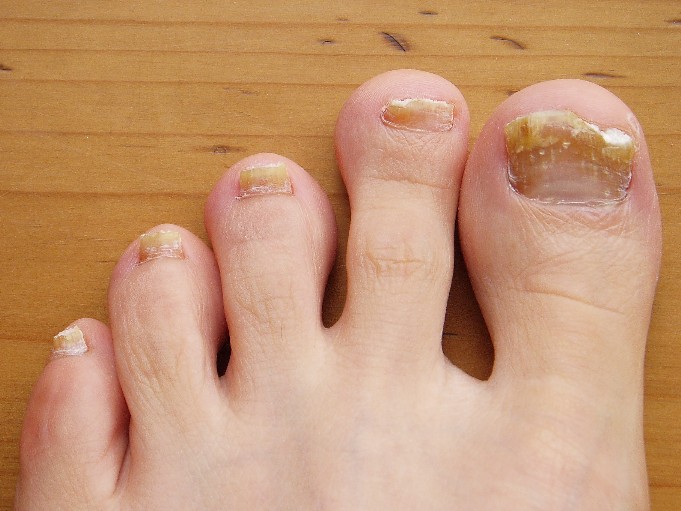Toenail Fungus – Causes, Treatment and Prevention
Nail fungus infection is also known as onychomycosis. Few or no symptoms of nail fungus is produced for mild infections. For severe infections, the toenail turns whitish/ greenish/ grayish and is brittle and thick sometimes the nail seems detached from its nail bed. Toenail infections can be gotten as an extension of athlete’s foot infection or by walking in public places barefoot.
People with diabetes and weak immune systems are more prone to toenail fungus infections.
Contents
Nail fungus treatment
Toenail fungus is treated for at least three months while some need 11 months with drug treatment. The nail remains there as the nail grows out and medicine gets into the nail. A toenail infection will take up to 18 months to totally cure because this is the time taken for a healthy toenail to grow. Keep the nails short.
Over the counter treatment
Over the counter treatments are readily available in creams, solutions or liquid forms. They are applied directly to the nail and skin surrounding the nail to get rid of the fungus infection totally. Common over the counter topical antifungals includes terbinafine and clotrimazole. These work best with infections on the skin or nail surface but if the toenail fungus is severe and has invaded the nail bed prescription medicines are best for treatment. Terbinafine is effective and clears over 50% of the infection in 12 weeks but has side effects which include rash, headaches, discomfort loss of the sense of smell and rarely can cause liver problems. It has also been reported of people developing lupus while using terbinafine.
Small studies have shown that a medicated chest rub is an inexpensive remedy which is readily available. Studies have shown that a chest rub such as the Vaporub will treat 38% of people with toenail fungus. No serious side effects can be experienced from using this medication, but more studies are needed. The application should be made for several months and if no changes take place to consult a doctor.
Antifungal prescriptions
Drugs applied daily can be costly as they are used daily. Once you have a health care provider, confirm you have toenail infections try new drugs which might be of help. Some prescribed medicines include itraconazole, terbinafine, and griseofulvin; these are known to be most effective ad they clear up to 80% of infections in one treatment course. Studies on Fluconazole have not been concluded thoroughly though doctors prescribe it.
Ciclopirox is a nail lacquer used for nail fungus treatment. It is applied like a nail polish to the affected toenails daily. This is used as an alternative treatment for people who do not want to risk the side effects caused by antifungals.
Fungal infections are difficult to cure and may keep recurring, so it is important to prevent further recurring.
Preventing toenail fungal infections
Keep the feet dry and clean. Ensure you dry between the toes well after a shower, bath, and swimming. Wear cotton socks and wear gloves if your hands are immersed in water frequently. For pedicures and manicures choose salons with good sterilization procedures.
[ppmaccordion][ppmtoggle title=”About the Author – Sarah Wanene”]
Sarah Wanene is an experienced health and medical content writer. She is passionate about healthy living and health related issues; always eager and ready to learn and help others better their lives.[/ppmtoggle] [/ppmaccordion]

